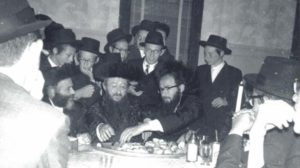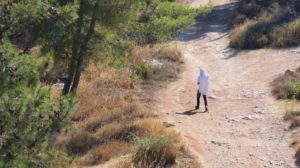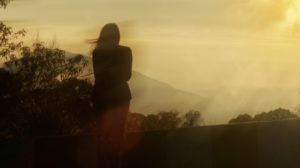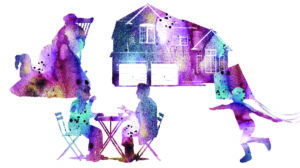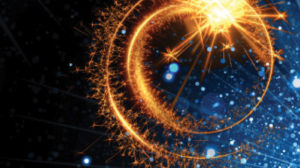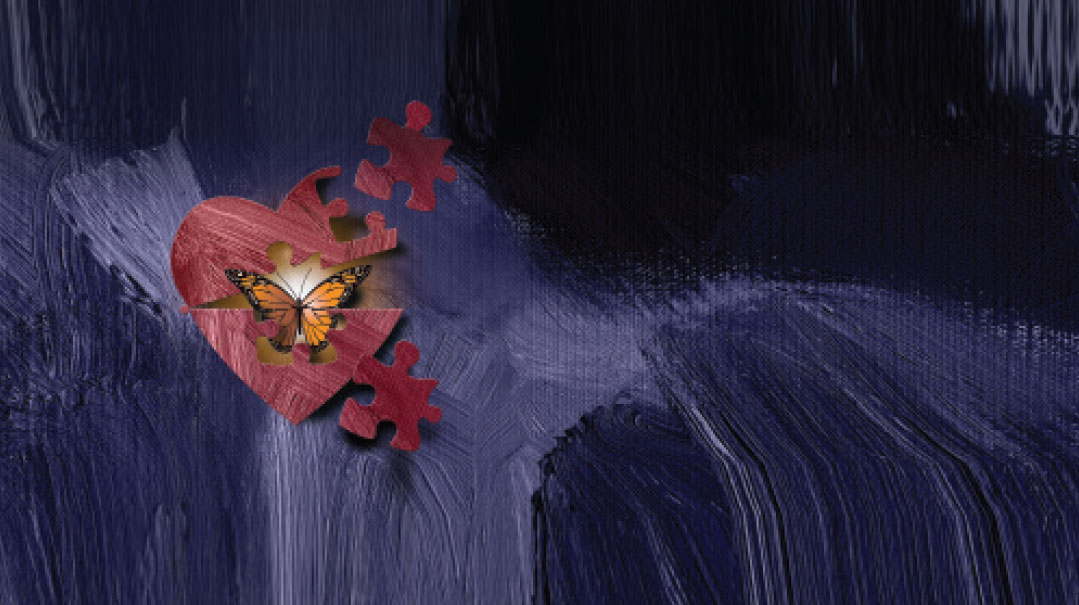Purify Your Heart: Part VI

The path to greatness runs through our mistakes

Barrier: Am I Angel or Sinner?
I’d like to embrace the purity and holiness of Yom Kippur, but I’ve been through a Yom Kippur every single year, and I’m never very different at the end of it. We’re told the day itself brings us to a high place. But isn’t that just a tease? We get to a place that’s impossible to sustain. How does this translate into everyday life?
The nusach of the tefillos seems to send conflicting messages. On the one hand, we have the 13 Middos of Rachamim, the niggunim that uplift us. On the other hand, again and again and again we say Vidui. I don’t find it easy to recite a litany of everything I’ve done wrong (as well as many things I haven’t done wrong and I say anyway). It drags me down. How can I reconcile the two aspects of the day and the davening?
Open Thoughts
Said Rabi Akiva: Fortunate are you, Yisrael. Before Whom are you purified and Who purifies you? Your Father in Heaven, as it say, “I will sprinkle on you pure waters and you will be purified.” And it says, “Yisrael’s hope (mikveh) is Hashem.” Just as a mikveh purifies those who are impure, so Hakadosh Baruch Hu purifies Yisrael. (Mishnah Yoma 8:9)
Yom Kippur is our hope and our mikveh. What does this mean?
Let’s turn to water to understand.
Chazal tell us there were two separate phases of Creation. At the start, “the land was empty and desolate (tohu v’vohu) and there was darkness on the face of the deep (tehom), and the spirit of Hashem hovered over the water” (Bereishis 1:2).
The second stage saw the sky and earth fashioned out of raw material that was essentially liquid. Form was imposed on formlessness.
When the second stage was over, a world came into existence: trees, flowers, agriculture, buildings, communication. A world that seems to have no need for a connection with a Creator — all the work is done. In this setting, a person can ignore the Creator and get caught up in his own program. He can be led astray by selfishness or sadness.
That’s why Hashem didn’t create the world in a single wondrous act of completion. There’s a pre-stage to creation. A world of water, a formless, wondrous ocean of possibility.
The first stage of creation — the stage of water — was the womb that birthed the world. When a person immerses in the mikveh, he returns to the state of the world yet unborn. It’s a return to a fluid state, before we ossified into a person with aspects we aren’t proud of. We can return to the place from which we were created, that essential self that can never be touched by sin. We can see this in the etymology of the word mayim, which shares the same root as mah, what. When a person immerses in water, he asks: What am I? What is my essence? Where is that untouchable place, the holy of holies that defines me?
Water is a solvent. Soak a dirty rag in water, and the water will dissolve the grime, leaving the fabric clean. This physical property points to a spiritual reality: Water represents a stripping away of externals to reveal what’s inside. All the things that don’t really matter can dissolve. The claims of ego can liquefy and wash away. The grime accumulated over the year can be cleansed. We can leave behind pettiness and smallness and trauma and childhood wounds. We’re left with the source of where we come from. The place of birth. The place where we are attached to Hashem.
When that happens, everything changes. We’ve redefined ourselves. We’ve touched the innermost point of being, and it’s a place of radiance. When we do this on Yom Kippur, we can return to that place, no matter the circumstance, no matter the time of year. We touch it, imagine ourselves there, and let our new definition of self spill into daily life.
That’s why the word mikveh is related to the word tikvah, hope. Yom Kippur is the touchstone for our hope, our belief in our innate, essential worthiness as a creation of Hashem. Place your trust and hope in Me, Hashem tells us each Yom Kippur, and I will take you back to your place of origin, back to that untouchable place where all is light.
Open Hearts
The Maharal in Nesiv Hateshuvah brings a story of a servant in the king’s palace who drops a beautiful porcelain dish. Looking at the broken pieces, he’s filled with terror and despair. What next?
A wise man tells him to throw away the fragments. Doubtful of this advice, the servant asks a fellow worker. Again, he receives the answer: “The king would never use a broken vessel. It’s not befitting for his greatness.” Unsatisfied, the servant approached a potter. “I could patch it up, but it would be an incomplete job,” he tells him.
Still unsure, the servant approached the king himself. “What should I do with this broken vessel?” he asked. “I will use it, and use it gladly,” replied the king.
We have sinned, the Maharal continues. We feel like broken vessels. But this was the advice given to the angels: “What is the punishment due to a sinner?” They asked. “Let him do teshuvah and be forgiven,” Hashem replies.
Teshuvah — returning to Hashem — is built into creation. In fact, before Hashem created the world, He created teshuvah. It gives us a transformative perspective of Yom Kippur — and of our life’s work.
Hashem didn’t create us so we wouldn’t make mistakes. Hashem made us so we’d strive and be courageous and push ourselves beyond our limits. Whenever we try something new and beautiful and different, there’s a chance we might fail. When we strive for something that’s beyond us, we may very well fail. In fact, we’ll probably fail.
A Jew, by his very definition, is commanded to strive for greatness. We have 711 mitzvos. That’s 711 opportunities. The myriad details can sculpture our lives so that it’s a constant dialogue with Hashem. But there’s also a possibility that we’ll get things wrong.
What does Hashem tell us? What do the Anshei Knesses Hagedolah build into the very fabric of our tefillah? Forgiveness. They’re telling us, it’s okay that you’re going to fail. Failure is part of being alive. We’ve put a system in place to ensure that you don’t get weighed down by those mistakes. You’re not going to feel estranged from your Creator. You’re going to ask for forgiveness and pick yourself up and try again. Because that’s the path to greatness — through the mistakes. Through getting to know ourselves and our strengths and what we really, really want in life.
Every year, Hashem gives us the gift of Yom Kippur. And on this day, we say Vidui repeatedly. Each time, we’re peeling off another layer that separates us from the radiance of our inner beings. Vidui may not be easy to say, but there’s an underlying relief, even joy, in putting it all on the table, bringing it out into the open. It’s like those difficult discussions we have to have —they’re not easy, but they clear the air, and everything feels different afterward.
And so we say, again and again, ashamnu. I’m going to take the time and energy to redefine myself, and say, this is not me. I can externalize it, separate myself from it, and let it go. The reason I can say this and mean it is because who I am — my essential self — is never sullied and never polluted by my speech, actions, thoughts.
Every single morning we say, Modeh Ani lefanechah… raba emunasecha. And there’s a hidden message here: Great is your emunah in our potential. Great is Your emunah that we can climb heights. Great is your emunah that even if we fall, we can find our way back up.
Open Eyes
The waters close over your head. You hear nothing, see nothing, but feel submerged in a pool of love and light. Weightless but strangely connected. The world fades away. You’ve returned to the waters of the womb, the point of origin.
What happens? The water dissolves layer after layer.
The first layer that’s wiped clean is our aveiros. The wrong words, actions, even thoughts are washed away as we say Vidui and regret our distance from Hashem.
The next layer that’s liquefied is our personality traits. The jealousy, the pettiness, the resentment, the anger. As we feel weaker and more vulnerable, we become aware of our frailty and are filled with gratitude for our gifts. The water — the work of Yom Kippur — continues it’s transformation, dissolving the confusion and the human pull towards physicality.
As the day goes on, and we accept Hashem’s kingship over ourselves, we arrive. We come to a space where the only thing we want is good. We touch that untouchable place that’s never stained and never sullied. And then we have returned. We have returned to Hashem. To the Torah. To the chelek Elokai Mimaal that is my essence — and which will define me, all year long.
With Open Lips
Leshanah habaa biYeruahalayim: Twice a year, we sing out these words. On Leil HaSeder, we feel the lack of the Korban Pesach — and on Yom Kippur, the day when the Kohein Gadol enters the holy of holies, we long for the avodah of the Kohein Gadol.
We’re a long way from the Beis Hamikdash, but we’ve been instructed to read the avodah and to find ourselves in the words, the acts, the spirit. Let’s begin.
The Garments: The highlight of Yom Kippur is when the Kohein Gadol enters into the kodesh kedoshim, the innermost sanctum of the Beis Hamikdash — and our heart. But to do so, he has some preparation. To encounter Hashem, to engage in the seminal moment of love, we need to cleanse ourselves. The cleansing is symbolized by the gold garments worn by the Kohein Gadol, when we examine our actions, figure out why we have become distanced, say Vidui, and restore our shine.
And then we are ready to don the pure white and go inward. We’re restored to a consciousness of Hashem that infuses every aspect of our lives. It’s a connection that’s not based on what I do, but on who I am — a beloved child of Hashem, returning to His embrace. Our white garments reflect the deepest place in every Jew — and his connection to the truth of ein od milvado.
Hazayah, sprinkling the blood: “It’s in his blood” is an idiom for something that’s an inherent part of a person. What’s in our blood? Emunah. Connection to Hashem. Dedication to Hashem’s kingship. The blood was sprinkled once upward and seven times downward to symbolize that our multitude of actions in This World (seven is the number of This-World multiplicity) can be brought under the rubric of One. Through our wish to connect to Hashem, we can connect everything to the Ultimate One.
Hishtachava’a, prostration: Being part of something bigger than us — whether out in nature, as part of a choir or a team — carries a taste of transcendence. Part of us wants to negate our separateness and melt into something bigger. When we bow, we nullify our separateness and say, my neshamah is a part of You, Hashem. And that can fill us with joy — and more than just a taste of transcendence.
Ketores, offering the Incense: The highlight of the avodah was the moment when the Kohein Gadol entered the kodesh hakedoshim and placed the incense on the coals. A lump of coal carries its heat within. There are no dancing flames; at most, we see a faint glow. The incense shares this quality: The fragrance was released only when the mixture began to burn. All this hints to an inward quality of our avodah — a fire that burns within, kindled by our yearning for Hashem’s light here in the world of darkness. A fire sustained by the knowledge that Hashem’s light permeates the coal, the spice, and our very beings.
“How majestic was the Kohein Gadol… like the golden bells… like the sight of sunlight… like the garden’s rose.”
Yom Kippur is the most joyous day of the year because it shows the sweetness we can live with every single day. On Yom Kippur, we experience centeredness and openness, clarity and closeness. We return to the inner sanctum of our hearts, the lifnei v’lifnim, the place of origin. It’s the place before action, deeper than action, a place that isn’t defined and has no boundaries.
And this is what we can take into the year ahead. That knowledge that we can be defined not by what we think or do, but by our essential selves. The day might be awe-inspiring, but it lifts us and fills us with joy — like golden bells, sunlight, a delicate rose.
(Originally featured in Family First, Issue 711)
Oops! We could not locate your form.


